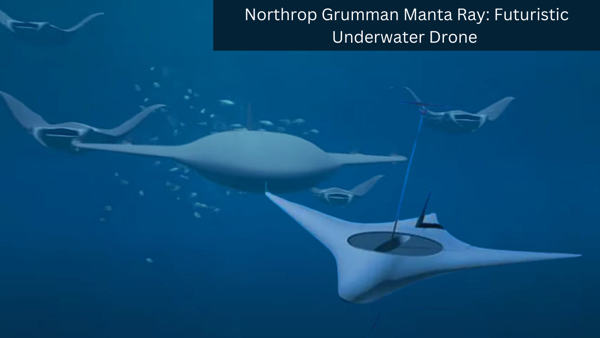
Defence & Security
Northrop Grumman Manta Ray: Upcoming Futuristic AI based High Enduring Unmanned Underwater Drone Will Change Future Of Underwater Warfare Scenario
The giant oceanic manta ray is an underwater social species typically found in tropical and subtropical waters: but can also be found in temperate waters.
This curious and playful species is favorite among researchers of oceanography and also among scuba drivers because of its unique shape, and its unique shape makes this magnificent species agile and stealthy in the oceanic environment.
The unique stealthy shape of this species has inspired Northrop Grumman, one of America's largest weapon manufacturers, to develop a long-lasting undersea drone, particularly for its navy and other organs of force.
Northrop Grumman has been pioneering new capabilities in the undersea domain for more than 50 years. The new superior undersea drone technology will be able to operate for extended operating time and over long distances in ocean environments without the need for on-site human assistance.
The uniquely designed undersea drone will be able to conduct complex undersea warfare operations, which are currently dominated by noisy submarines.
The manta ray will operate in conjugation with command, control, and communication capability. To ensure long-duration underwater operations, human supervision will be minimalized.
Northrop Grumman is also attempting to incorporate more artificial intelligence into the drone in order to provide the capability to make more independent decisions during any major combat operation.
The data from the manta ray drone will help forces of joint operation groups to make better and more accurate decisions and gain strategic advantages during any missions or operations against its adversaries.
Along with its reconnaissance capability, the manta ray drone will have a payload-carrying capability, making this smart weapon more critical for subsea operations and making it more difficult for enemy states to counter.
After completing Phase 1 which began in 2020, Northrop Grumman was recently awarded a phase 2 contract to continue the program and complete the work on subsystem testing followed by fabrication and in-water demonstrations of full-scale integrated vehicles.
In addition, the company broke ground on a new system integration and test lab, which will use modeling and simulation to test the software of the system before it is loaded onto the vehicle. The Navy recently revealed new plans for a "purpose-built" facility at its Port Hueneme warfare center to test its latest unmanned surface and subsurface vehicles. The organization will use this platform to test the manta ray drone systems' efficiencies and capability.
The Manta Ray program intends to advance critical technologies that will benefit future unmanned undersea vehicle designs, such as:
1. Novel energy management techniques for operations and undersea energy harvesting techniques at operationally relevant depths.
2. Undersea propulsion systems of high power and high efficiency.
3. New low-power underwater detection and classification of hazards or threat detection.
4. Mission management approaches for extended durations while accounting for dynamic maritime environments.
5. Innovative methods for leveraging existing maritime data sets and utilizing novel maritime parameters for high-efficiency navigation.
6. New approaches for reducing biofouling, corrosion, and other material degradation during long-duration missions.
Who else is developing similar technologies:
Chinese media reported in early September 2021 that Chinese researchers from a military-linked university had conducted the first open sea test of a bionic robot that resembles and glides like the American Manta-Ray drone in the South China Sea's Paracel Islands region.
The Chinese state-run news agency first reported about the drone test on September 9, 2021. a video was released by the Chinese authority, in that video, The bright yellow unmanned underwater vehicle (UUV) is seen; being released into the water near the disputed Xisha Islands, also known as the Paracel Islands.
The Chinese drone in the video flapped its wings and was seen efficiently sliding underwater. These kinds of drones are fine examples of biomimetics, a design technology that incorporates the physical attributes of biological species. According to Xinhua, the drone is a 470-kilogram (1,036-pound) bionic soft robot prototype with a three-meter wingspan that can dive to a depth of up to 1,025 meters.
According to Chinese developers, the drone has “high propulsion efficiency, great maneuverability, high stability, low environmental disturbance, low noise, large load capacity, and smooth seafloor landing,”.
Biomimetics is gaining popularity around the world. The manta ray has inspired a number of projects, including the United States Manta Ray project, the British Royal Marines' Raydrive, and Singapore's MantaDroid.
Weapon management systems are becoming smarter and more energy efficient, so weapon manufacturers are developing weapons that are smarter and stealthier in order to make them difficult to detect.
Weapon systems like the Manta Ray drone will revolutionize the ocean warfare of the future.

0 Comments